The three powerful aspects of fitness – actually, make that four!
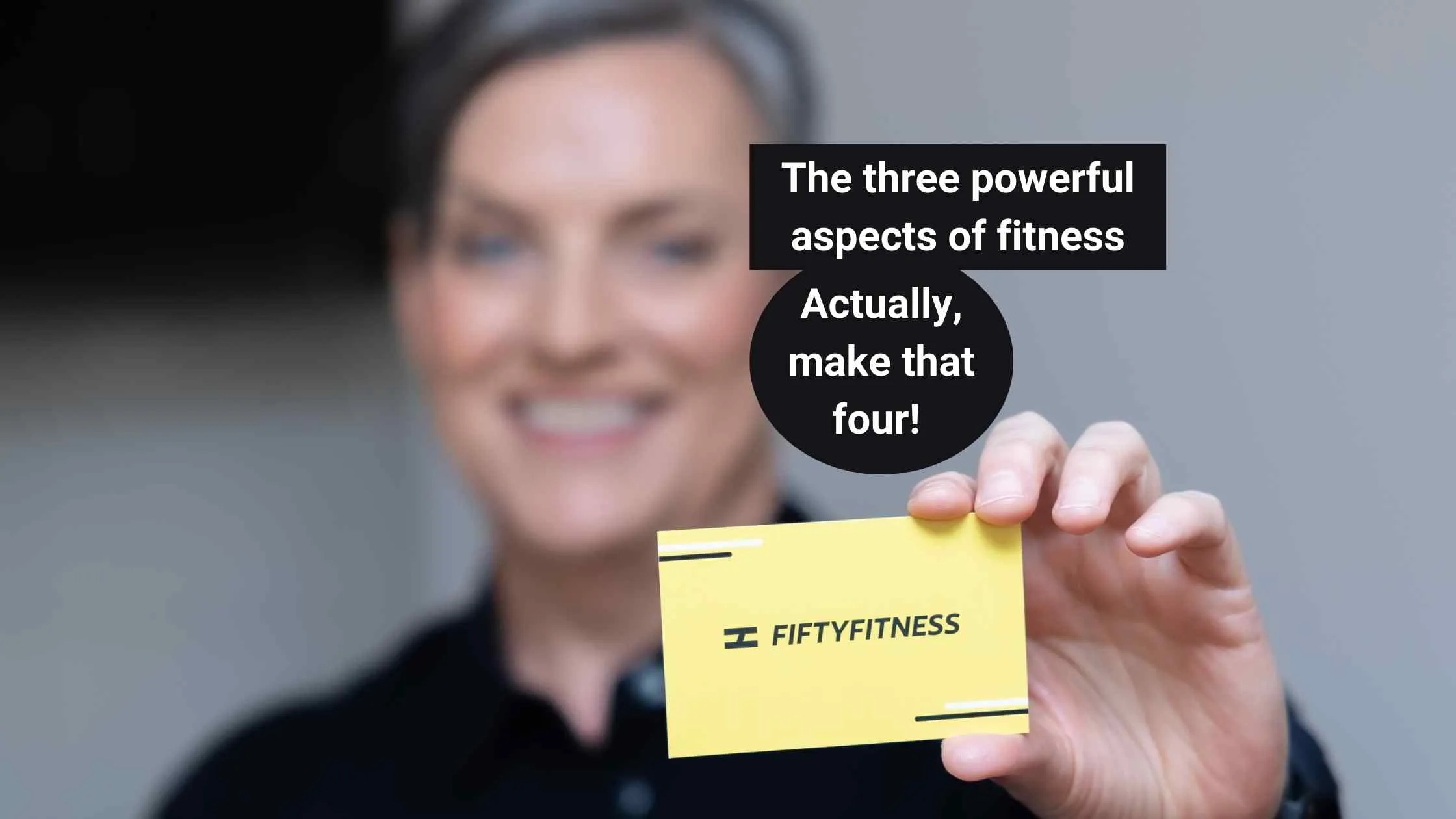
Three aspects of fitness or four?
As a fitness enthusiast and personal trainer, I practice and advocate exercise as a major vehicle for wellbeing.
My initial intention for this article was to outline the three aspects of fitness, commonly known as the three Ss, and explain how they are all important.
But I realised that there is far more to exercise than these three things.
I believe that there is a fourth and equally powerful aspect of fitness that is a critical factor in the bigger picture of personal wellbeing.
A different perspective
I’m sure you don’t need me to tell you that exercise is something we all should do.
Even if we can’t name any specific benefits, I reckon that it’s general knowledge in the community that exercise is something we need to do for our health and wellbeing.
But knowing exercise is good for us doesn’t mean that we do it.
My proposed fourth aspect of fitness provides alternative motivation for giving exercise a go.
For me it comes down to how exercise makes me feel – physically, mentally and emotionally in equal measure.
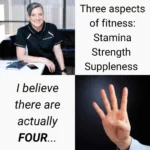
What are the three powerful aspects of fitness?
The three well-known aspects of fitness are called the three Ss and ideal fitness routines have a combination of these.
- Strength
- Stamina – also known as endurance
- Suppleness – also known as flexibility
In this article I’ll explain each of these and the contribution they make to our wellbeing.
But I’m also going to introduce what I believe should be the fourth S of fitness, which I call:
Serenity – ahhhhh!
The other three Ss relate to the physical aspects of fitness, but from my point of view there is a mental and emotional aspect that we derive from working on the other three.
Let’s dive in and examine the three well-known Ss of fitness and see how serenity evolves from those.
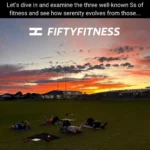
Stamina aka endurance
This form of exercise increases our ability to sustain physical activity and the list of benefits to health is long.
Obviously, the duration and intensity of your endurance exercise depends on the outcomes you want.
Training for general health and easy performance of daily living activities or getting around a golf course looks quite different to training for an endurance event like a triathlon.
While there are different forms of endurance training, for most people it involves continuous activity at a sustainable pace for an extended period (> 30 minutes).
Endurance training examples
Activities such as lap swimming, running, cycling, and brisk walking are common examples.
Some people prefer a long session on a piece of cardio equipment like a rower, cross trainer, stationary bike, or treadmill.
Endurance training can also be done at higher intensity for shorter periods of time with lots of options available for giving it a try.
A key indicator of improvement in this area is decreased resting heart rate (slow pulse).
People with a high level of endurance fitness can have resting heart rates less than 50 beats per minute whereas the normal range is 60 – 100 beats per minute.

Muscular endurance
The endurance training I’ve described so far is mostly about the heart and lungs, but it also builds stamina in the muscles used to do the activities.
And muscular endurance has standalone importance.
Our muscles need staying power to maintain posture and do everyday activities as well as the leisure and physical activities we enjoy.
Muscular endurance can be improved through strength training which leads me to the second aspect of fitness.
Strength
This one is all about muscles – keeping them strong and powerful.
Muscular strength is important for the same reasons as muscular endurance, but also for maintaining balance and mobility.
Falls and resultant injuries among the elderly population is a big issue for the community which can be avoided through preservation of strength.
We improve strength by doing movements against resistance.
Resistance can be our own bodyweight, weights, or bands.
I reckon most people think about gyms when the idea of strength/resistance training comes up, but there are many ways to do this type of exercise without setting foot in a gym.
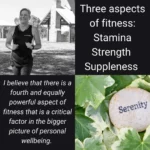
Hypertrophy
Improvement in muscle strength with resistance training comes with hypertrophy, which is increase in muscle size.
I’m not talking about body builder hypertrophy, that requires a very specific regime of lifting and nutrition.
The increase in muscle size that goes with general strength training is commonly called ‘definition’ or ‘toning’.
Strength training can be neglected in favour of endurance but remember, a well-rounded fitness routine covers the three aspects of fitness – including flexibility.
Suppleness aka flexibility
Suppleness or flexibility is the range of movement we have about our joints and is a key component to the mobility we need for both daily living and leisure activities.
You may already be experiencing the fact that flexibility decreases with age.
The good news is that flexibility, and therefore mobility, can be maintained and improved by keeping both muscle and connective tissue healthy through exercise.
And of course, it’s important to stretch.
Stretching links to serenity
I’ve written previously about how stretching can be a gateway to increasing physical activity.
If you’re not doing any exercise, stretching can be a great place to start.
But it’s also when the serenity can kick in.
Feel the serenity
When you’re doing regular exercise it’s great to do static stretches at the end of a workout.
It’s during the cool down and stretch that we can start to feel the serenity vibe.
When you’re stretching after a workout where you may have challenged yourself a bit, you can feel buzzed and energised in your body, as well as feelings of pride and satisfaction. Serenity.
So what exactly do I mean by the serenity aspect of fitness?
Serenity – it’s the vibe
This might seem absurd – how can doing vigorous exercise be calming?
I don’t necessarily mean that the activities themselves are soothing.
Although exercise can sooth – I’m thinking of swimming, yoga, an easy paced run or walking in a lovely location – it’s not the participation time I’m talking about.
It’s the feeling that carries through after the workout and into your everyday life – the vibe.
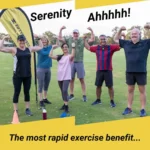
Endorphins
Endorphins can play a role in the vibe.
These are hormones released during exercise along with other chemicals that occur naturally in our bodies that are linked to good feelings like enhanced mood and general wellbeing.
Take a break
Exercise is also a chance to take time out from our daily demands and physical activity releases tension.
Depending on what exercise you do, it can also give us a chance to be in nature and connect with others.
Serenity is the most rapid benefit of exercise
While it might take weeks or months of training to improve stamina, strength and suppleness, the benefit of serenity is felt much more quickly – if not immediately.
Rather than tracking progress or taking a fitness test or some other measure of improvement, we can simply think about how much better we feel when we’re exercising to know it’s working.

Just do it for the serenity
My advocacy for exercise is mainly for the benefit of serenity.
We can take the pressure off ourselves for all the reasons we should and just exercise for enjoyment and feeling good.
Then we tick all the boxes next to the reasons we must exercise without thinking about it.
My top tips for getting started – start small, build gradually and try different things until you find something that’s enjoyable for you.
Check out my YouTube channel
Check out the content of this article – with additional insights – in Episode 2 on my YouTube channel.

Keep in touch
Please reach out to me if anything in this article resonates with you.
You can email me at kate@fiftyfitness.com.au or connect via social media.
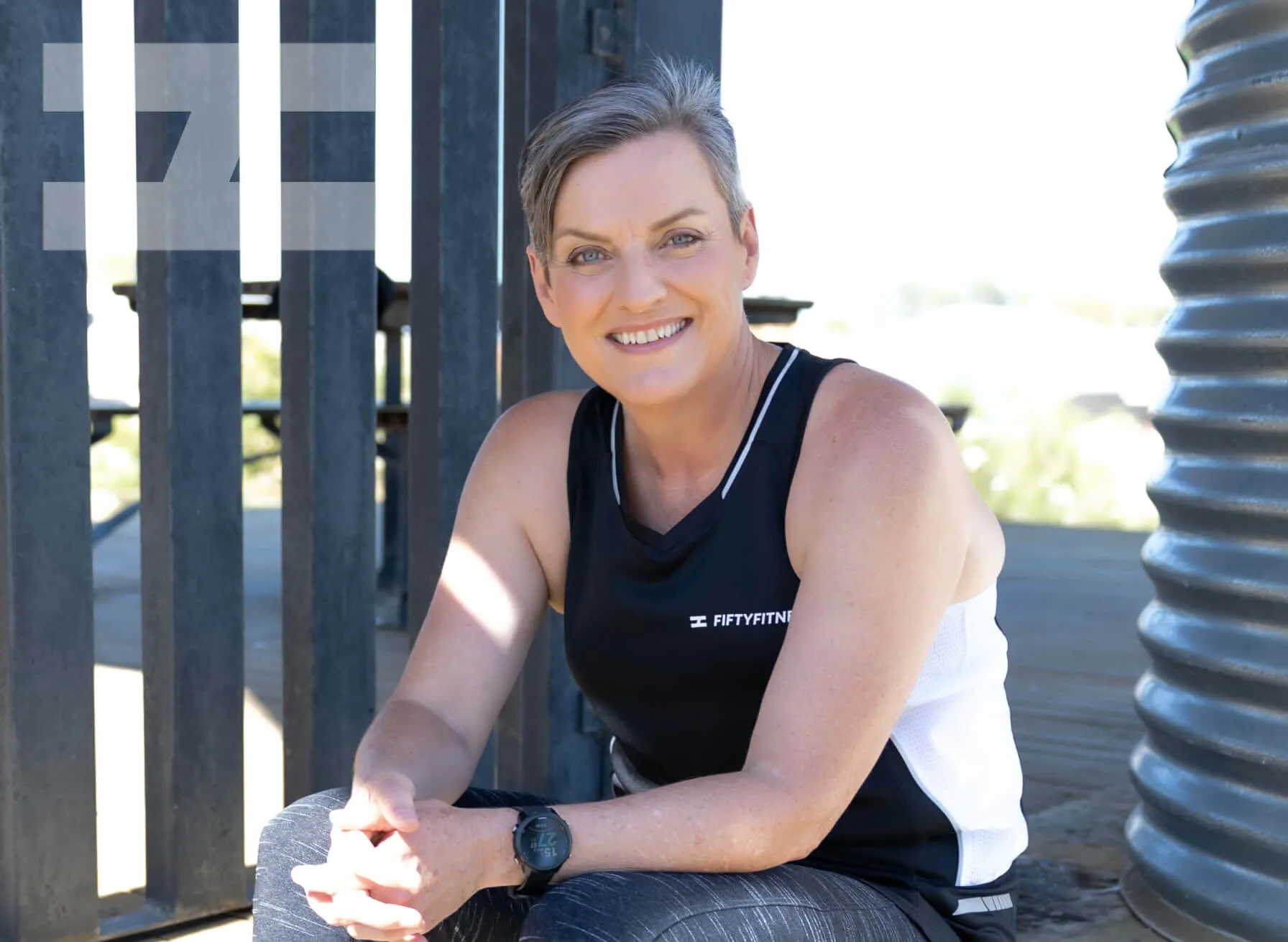
Subscribe now
Blog Subscription Form
A blog subscription form, used for the blog page and posts.
"*" indicates required fields